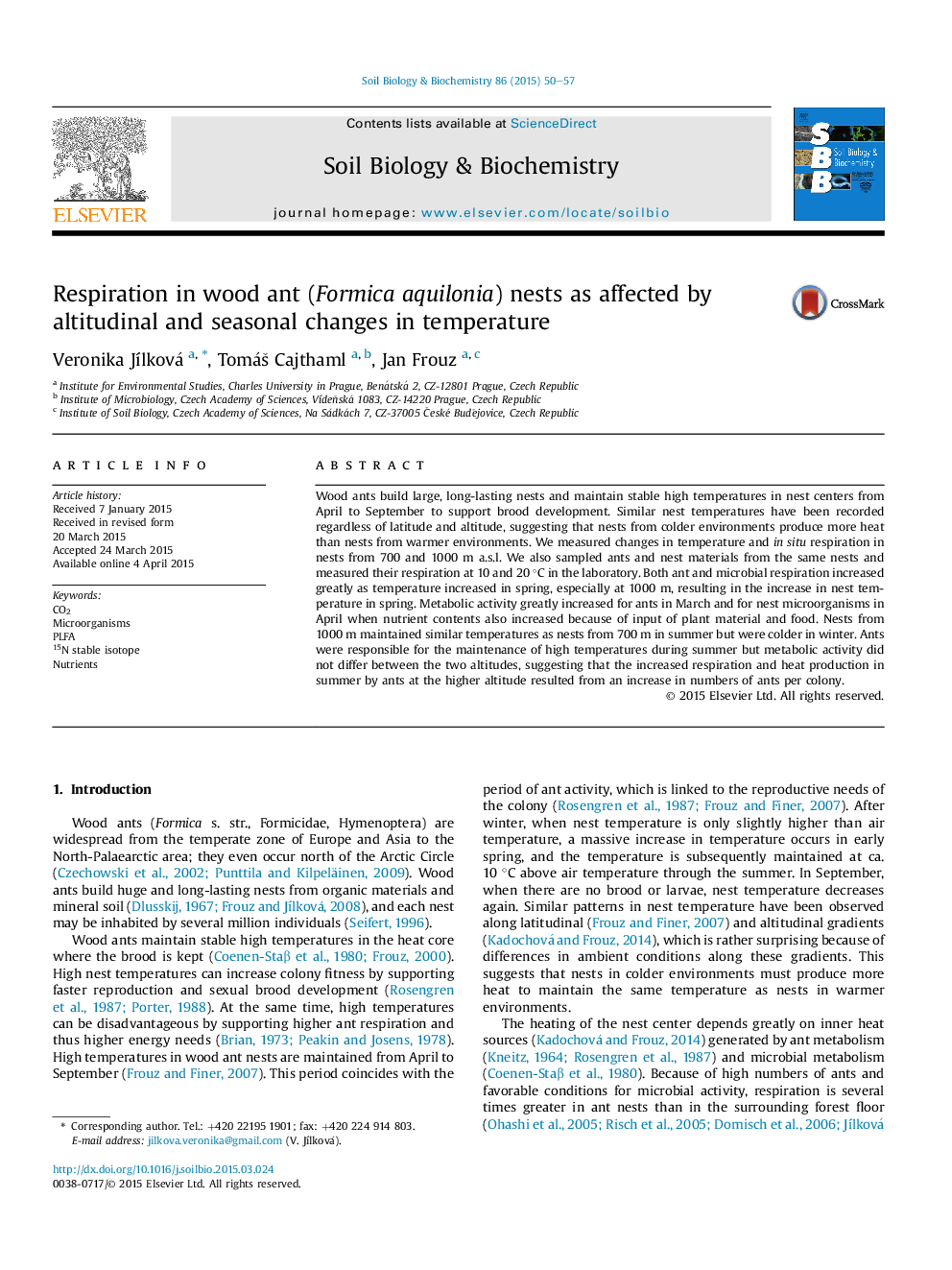| Article ID | Journal | Published Year | Pages | File Type |
|---|---|---|---|---|
| 2024520 | Soil Biology and Biochemistry | 2015 | 8 Pages |
•Nests at 1000 m had similar temperatures as nests at 700 m in summer.•Ants were responsible for the maintenance of high temperatures during summer.•Ants and microorganisms had steeper response of respiration to temperature in spring than in summer.•Microbial biomass was increased in nests in spring when also nutrient contents were high.
Wood ants build large, long-lasting nests and maintain stable high temperatures in nest centers from April to September to support brood development. Similar nest temperatures have been recorded regardless of latitude and altitude, suggesting that nests from colder environments produce more heat than nests from warmer environments. We measured changes in temperature and in situ respiration in nests from 700 and 1000 m a.s.l. We also sampled ants and nest materials from the same nests and measured their respiration at 10 and 20 °C in the laboratory. Both ant and microbial respiration increased greatly as temperature increased in spring, especially at 1000 m, resulting in the increase in nest temperature in spring. Metabolic activity greatly increased for ants in March and for nest microorganisms in April when nutrient contents also increased because of input of plant material and food. Nests from 1000 m maintained similar temperatures as nests from 700 m in summer but were colder in winter. Ants were responsible for the maintenance of high temperatures during summer but metabolic activity did not differ between the two altitudes, suggesting that the increased respiration and heat production in summer by ants at the higher altitude resulted from an increase in numbers of ants per colony.
